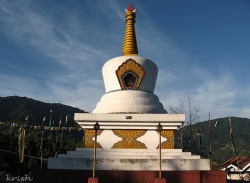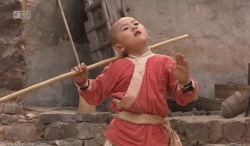About Tibetan Buddhist Nuns
The role of Buddhist Nuns in the Buddhist monastic system began in compromise. Lord Buddha affirmed the equal potential for both men and women to attain enlightenment. However, Buddhist texts tell the story of his reluctance to admit women to the ordained sangha (the community of Buddhist practitioners). It is said that he agreed only by adding rules that kept nuns permanently subordinate to monks. It is possible that Buddha did say this for temporal and societal reasons of his own. The question lingers: Were these really the words of Lord Buddha? Buddhism has from its beginnings maintained a strong oral tradition within the guru/disciple relationship and the monastic lineages.
Early written accounts of these oral teachings are therefore a writer’s interpretation of Buddha’s actual words and intent. There has naturally been revision over the years to suit the political and gender discrimination of the moment. In Buddhism, the texts and scriptures are to be debated, questioned, and understood on many different levels according to one’s personal evolution and circumstance. There are thousands of commentaries on the Buddha’s original teachings, with the ultimate intention of leading to an existential understanding beyond words.
About Tibetan Buddhist Nuns. The term Tibetan Buddhist nuns refers to nuns with Tibetan ethnicity, either within Tibet or in the exile community, and also to nuns who practice their religion in the Tibetan Buddhist tradition. Buddhism thrived in India for many centuries following Gautama Buddha’s life. Repeated invasions of India from the north wiped out its extensive system of Buddhist monasteries and universities. Sacred texts were smuggled into Tibet, where they remained until the 20th century. When the Chinese communist invasion of Tibet in 1949 launched the destruction of over 7000 monasteries and much of Tibetan culture, the process reversed. Texts are continually being brought out of Tibet with people escaping into exile, thus being returned to Buddhism’s land of origin. Many of the major Tibetan Buddhist monasteries have been re-established in India.
Tibetan Buddhism refers to Vajrayana Buddhism, also known as the Diamond path. It offers methods whereby a dedicated practitioner with the appropriate Karmic conditions can achieve realization in one lifetime. But an order of ordained nuns has not existed in Tibetan Buddhism. Nuns have been prohibited from studying the highest teachings or participating in scholarly training and are perpetual novices.
In Buddhist Himalayan society there are few options available to women. Most are restricted to the home and to the hard work of subsistence farming and repeated child-bearing. Although in many instances it is women who hold power in society through household economies and decision making, male children are more highly prized than females. It is customary for a family to send one son to the monastery to receive an education. This is considered an honor, as monks have high status and are called on to officiate at births, funerals, and other community events. Girls are kept at home to help out with work. A girl is soon married and so begins a life oriented towards family and community. There is great value in knowing one’s role in the context of others; however, for a girl who is spiritually inclined, this leaves little time or support for her to explore her inner being or develop her mind. A nun’s life in these communities can provide personal freedom and the opportunity to study precious Dharma teachings. Although ranked below monks in society, a Ani is nonetheless ranked above both lay women and men.
Buddhism permeates all of life in the Himalayan regions of Tibet, Nepal, Bhutan, Ladakh, Kinnaur, and Spiti. It is not uncommon for a person to have the wish to pursue enlightenment. Children learn to prostrate before learning to walk and can become religiously inclined at a very early age.
Some women become nuns later in life, after marriage and children and household responsibilities lessen. Old age is seen and supported as a time for meditation and preparation for the next life. Many people, both monastic and lay people, risk their lives to escape Tibet to be with their teachers in exile, and to be near His Holiness Dalai Lama, who maintains his residence in Dharamsala, northern India.
Nuns have become renowned for the depth and power of their practice. What has been lacking in Tibet and elsewhere in the Tibetan Buddhist diaspora is support and facilities for women to receive scholarly training, “shedras” offering the traditional course of study that has been historically available for monks. In Tibet itself it is now very difficult for anyone to obtain a traditional monastic education under the repressive policies of the Chinese Communist occupation. For nuns, devotion and meditative practice has lacked intellectual grounding. In actuality, many women yearn for the higher esoteric teachings and the challenges that come from years of study combined with rigorous formal retreat.
There is a growing movement to provide equal opportunities for nuns. Under the guidance of some of the greatest Buddhist teachers of our time, nuns are being encouraged to take up such previously forbidden activities as debating, Dakini dancing, thangka painting, and the making of sand mandalas.
Slowly, facilities for nuns are being built, “ani-gompas”, where they learn computer skills, mathematics, and English and Tibetan languages, in addition to their Buddhist practice.
There is also much discussion of making full ordination available for nuns, with the support of His Holiness Dalai Lama. At present, nuns who wish to take full vows must travel outside of India to places such as Korea and Taiwan, where they are given the title Gelongma. What is most urgently needed is education for nuns, for their own sake and for the sake of Dharma wisdom. As Dharma and texts are continually brought out of Tibet, there is now a tremendous opportunity to inform the translations and practices with the feminine aspect, grounded in experiential love and compassion.
In Vajrayana symbolism, wisdom is female and skillful means is male. Buddhism is filled with conflicting messages to women, and yet we have an opportunity to transcend old prejudices. When monks and nuns stand equal, upaya – skillful means – and prajna – intuitive wisdom – can provide Light on the Path for the benefit of all beings.


